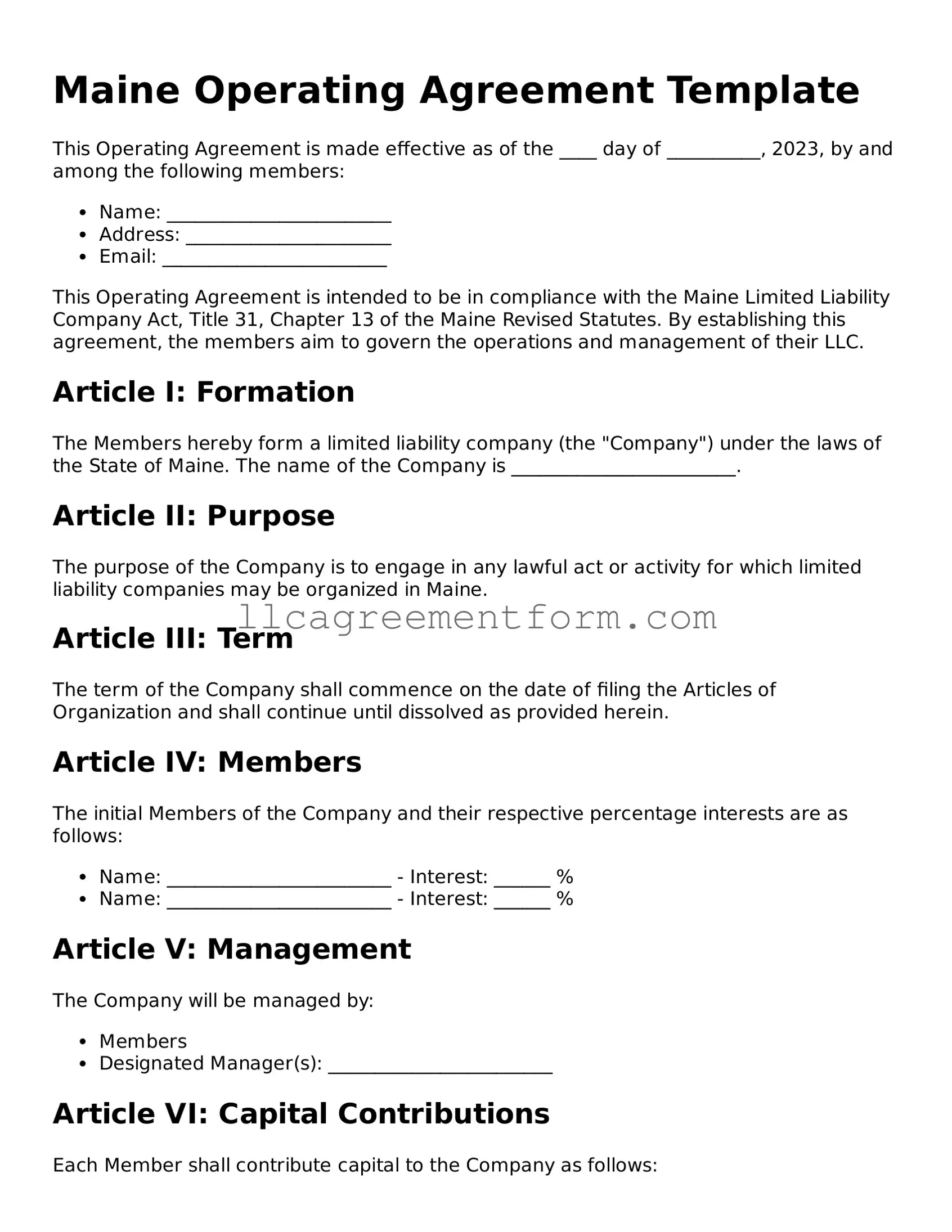Free Operating Agreement Document for Maine
The Maine Operating Agreement form is a crucial document for limited liability companies (LLCs) in the state of Maine, outlining the management structure and operational guidelines. This form helps define the roles and responsibilities of members, ensuring clarity and reducing potential conflicts. To get started on establishing your LLC's framework, fill out the form by clicking the button below.
Get Operating Agreement Now
